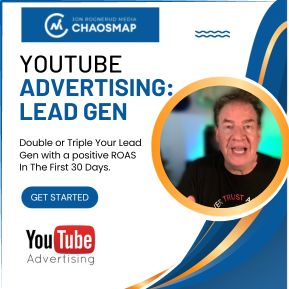So you have a social marketing campaign running.
But just having one is not enough.
We’re talking about digital integration: the art of coordinating all of your marketing efforts in order to present a unified and consistent brand to the consumer throughout all of your marketing channels.
So, how do you make sure that your social media offerings are productively integrated with your other digital assets? We’ve got some tips for you today.
Coordinate your social media profiles
One of the first steps is simple enough to be a no-brainer, but people continually seem to get it wrong: you have to keep your social media consistent within social media. This means stretching your brand across each outlet, only allowing for minor variations in theme or context if they’re appropriate for the channel.
Make sure that your color scheme, profile photos, and other details are as consistent as possible. Then, use a tool like TweetDeck to coordinate and schedule your posts to make sure your profiles march in lockstep.
Social media is not an Island
The first rule of digital integration is that no effort is unilateral, and no effort is made in a vacuum. Your efforts on social media are just as much a part of your marketing efforts as any other.
This means that in addition to making sure all of your social media accounts are productively linked, but they should be directly tied to your website or websites, your email marketing, and your search advertising campaigns. Everything needs to be coordinated.
Take your landing pages to the next level
So you’ve got your bespoke landing pages for your paid search campaigns. But do you have them set up for your Facebook, Twitter, and other social media accounts? It turns out that this is very useful, and each media channel needs a slightly tweaked landing page to do its job in the best possible way.
This is basically a continuity problem: since your ads look different on each media channel, the landing page needs to change, too. This is because you don’t want to surprise your users or accidentally make them think you’re taking them for a ride. They need to feel comfortable!
For E-Commerce, consider using tools like Shopify’s Facebook stores so that your landing pages sit on your social profiles, thus eliminating the possibility for click attrition. Once more sales channels are brought into the social media world, landing pages can exist on social profiles, increasing impulse buys and, of course, profit.
Digital integration with social media: no longer a luxury
Once you’ve managed to comprehensively integrate your social media accounts with the rest of your marketing, consumers will be able to travel through your brand channels totally comfortably, without feeling lost. This comfort should translate to increased brand trust, and hopefully, increased conversions.
______________________________
Nick Rojas is a business consultant and writer who lives in Los Angeles. He has consulted small and medium-sized enterprises for over twenty years. He has contributed articles to Visual.ly, Entrepreneur, and TechCrunch. You can follow him on Twitter @NickARojas, or you can reach him at NickAndrewRojas@gmail.com
Jon Rognerud and Chaosmap work with Fortune 500 companies, associations and entrepreneurs to create digital traffic strategies that scale up members, customers, leads and sales with profitable returns. Mr. Rognerud wrote a best-selling book (Buy On Amazon), “The Ultimate Guide To Optimizing Your Website” (Entrepreneur). Connect directly here.







